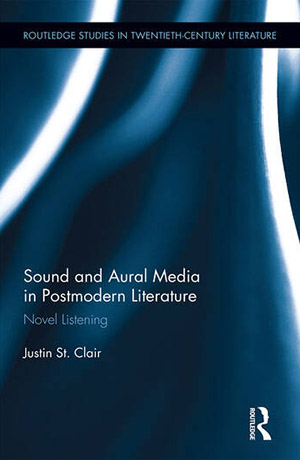Justin St. Clair
 |
Justin St. Clair | Professor Specializes in sound studies and contemporary fiction. HUMB 262 | 460-7973 | jmstclair@southalabama.edu | soundculturestudies.net |
|
|
|
|
|
Articles and Book Chapters
- "Sonic Methodologies in Literature." The Bloomsbury Handbook of Sonic Methodologies, edited by Michael Bull and Marcel Cobussen. Bloomsbury, 2021.
- "Notes on Soundtracked Fiction: The Past as Future." The Edinburgh Companion to Literature and Music, edited by Delia da Sousa Correa, Edinburgh University Press, 2020.
- "Music and Sound." Thomas Pynchon in Context, edited by Inger H. Dalsgaard. Cambridge University Press, 2019.
- "Literature and Sound." The Routledge Companion to Sound Studies, edited by Michael Bull. Routledge, 2018.
- "The Reality of Fiction in a Virtually Postmodern Metropolis: Jonathan Lethem’s Chronic City and Thomas Pynchon’s Bleeding Edge." The City since 9/11: Literature, Film, Television, edited by Keith Wilhite. Fairleigh Dickinson University Press, 2016.
- "White Noise and Television Sound." Journal of Sonic Studies 3.1, Fall 2012.
- "Mahfouz and the Arabian Nights Tradition." Approaches to Teaching the Works of Naguib Mahfouz, edited by Waïl S. Hassan and Susan Muaddi Darraj. MLA Approaches to Teaching World Literature, 2012.
- "Eat Your Fried Mush: The Curious Case of Wee Willie Shantz." Big Muddy 11.2, Fall 2011.
- "Binocular Disparity and Pynchon's Panoramic Paradigm." Pynchon’s Against the Day: A Corrupted Pilgrim’s Guide, edited by Jeffrey Severs and Christopher Leise. University of Delaware Press, 2011.
- "Soundtracking the Novel: Willy Vlautin’s Northline as Filmic Audiobook." Audiobooks, Literature, and Sound Studies, edited by Matthew Rubery. Routledge, 2011.
- "Borrowed Time: Thomas Pynchon's Against the Day and the Victorian Fourth Dimension." Science Fiction Studies 113 (38.1), March 2011.
Reviews, Etc.
- "Testing the Soundness." Los Angeles Review of Books, September 24, 2025.
- "Listening to Ourselves." American Book Review 45.3, Fall 2024.
- "An Antidote to Orthodoxy." Los Angeles Review of Books, June 1, 2021.
- Review of Neil Campbell's Under the Western Sky: Essays on the Fiction and Music of Willy Vlautin. Western American Literature 54.3, Fall 2019.
- "Rereading Thomas Pynchon: Postmodernism and the Political Real." Los Angeles Review of Books, March 4, 2015.
- "Thomas Pynchon Understands the Power of Conspiracy Theories." Salon, September 25, 2013. [Reprint of LARB review.]
- "Pynchon's Postmodern Legacy, or, Why Irony Is Still Relevant." Los Angeles Review of Books, September 21, 2013.
- Review of Michael W. Clune's American Literature and the Free Market, 1945–2000. Modern Fiction Studies 57.2, Summer 2011.
- "The Business of Art: An Interview with Kevin Gordon." Sense 1.8, March 2011.
- Entry on Mark Z. Danielewski. Encyclopedia of Contemporary Writers and Their Work, edited by Geoff Hamilton and Brian Jones. Facts on File, 2010.
- Entry on A Heartbreaking Work of Staggering Genius. Encyclopedia of Contemporary Writers and Their Work, edited by Geoff Hamilton and Brian Jones. Facts on File, 2010.
- "Generic Computations." Review of Mark L. Brake and Neil Hook’s Different Engines: How Science Drives Fiction and Fiction Drives Science. Science Fiction Studies 107 (36.1), March 2009.
- "The Opposite of Literature." Review of Ken Gelder’s Popular Fiction: The Logics and Practices of a Literary Field. Science Fiction Studies 101 (34.1), March 2007.
- "Celebrating Reproduction: Le Fabuleux destin d'Amélie Poulain." The Iowa Review, Online Edition, 2002.



 Soundtracked Books from the Acoustic Era to the Digital Age: A Century of "Books That
Sing." Routledge, 2022.
Soundtracked Books from the Acoustic Era to the Digital Age: A Century of "Books That
Sing." Routledge, 2022. Sound and Aural Media in Postmodern Literature: Novel Listening. Routledge, 2013.
Sound and Aural Media in Postmodern Literature: Novel Listening. Routledge, 2013.